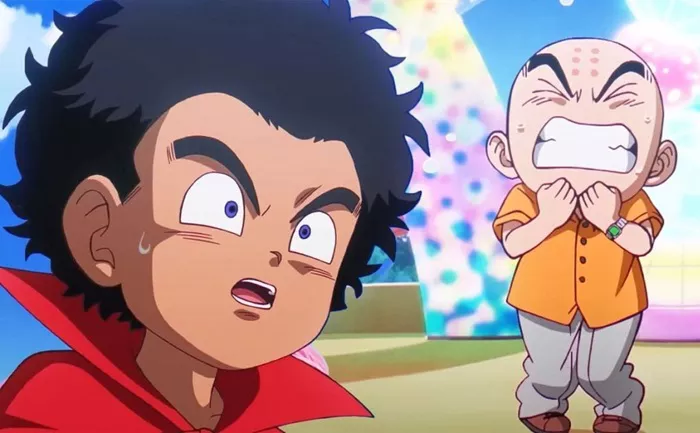In the latest developments of Dragon Ball Daima, the show continues to reveal the darker, more dystopian aspects of the Demon Realm. Although the Demon Realm was never meant to be a utopia, the show highlights the extreme conditions within the Third Demon World, where even visitors like Goku struggle to fit in. However, Goku’s allies, who share ties to the Demon Realm, find themselves caught up in the precarious political landscape—none more so than Panzy, a princess whose very survival is threatened by the regime.
Panzy’s background, revealed in episode 5, adds a layer of complexity to the narrative. She brings Goku, Shin, and Glorio to meet King Kadan, but her status as a civilian in the Third Demon World is precarious. Panzy, like other inhabitants, is marked by a “Magic Collar”—a device that tracks and controls the movements of the locals. This collar represents the oppressive forces at play within the Third Demon World, where the inhabitants are under constant surveillance by King Gomah’s forces, the Gendarmerie.
The Magic Collar: A Symbol of Oppression in the Third Demon World
In episode 6 of Dragon Ball Daima, Goku, Shin, Glorio, and Panzy encounter the Gendarmerie, who stop and inspect them. The Gendarmerie’s attention is drawn to the unusual trio traveling together from different Demon Worlds, and while Shin and Glorio announce their world of origin, Panzy simply shows her Magic Collar without further explanation. This moment serves as a subtle yet powerful commentary on the dystopian reality of the Third Demon World. The collar is not just a symbol of control but a tool used to ensure that no one can escape or rebel.
King Kadan’s kingdom is not immune to these harsh measures. His people, including his daughter, are closely monitored, and travel between the Demon Worlds is restricted by a light shield at the Demon Realm Tunnel. The Third Demon World is effectively imprisoned, with its people at the mercy of a corrupt system that demands heavy fees and punishes dissent. As the show progresses, it becomes clear why rebellion is taking root in this oppressed land.
King Kadan’s Rebellion Against the Tyrant Gomah
Given the constant surveillance and militarized presence within the Third Demon World, it makes sense that King Kadan is seeking allies like Glorio to challenge the tyranny of King Gomah. In Dragon Ball Daima, Kadan’s decision to enlist the help of powerful figures is portrayed as more than a mere political power play. His actions are driven by a desire to free his people from the oppressive grip of Gomah, whose authoritarian rule continues to spread across the region.
Kadan’s coup attempts add layers to his character, painting him not as a mere power-hungry monarch, but as a ruler desperate to protect his people. His noble, yet misunderstood, quest to overthrow Gomah provides an intriguing subplot that could lead to major shifts in the power dynamics of the Demon Realm.
Goku’s Role in the Rebellion and the Future of the Third Demon World
While King Kadan’s efforts to rebel are important, the immediate priority for Goku and his friends remains securing the first Dragon Ball and escaping the clutches of the Third Demon World. The longer Goku stays hidden among the locals, the more entrenched Gomah’s authoritarian rule becomes. The fate of the Third Demon World hinges on Goku’s ability to help topple Gomah’s reign, offering a glimpse of hope for a region otherwise trapped in a cycle of oppression and control.
In Dragon Ball Daima, the stakes continue to rise as Goku and his allies navigate a world filled with surveillance, rebellion, and the looming threat of a tyrannical ruler. The show’s portrayal of the Demon Realm’s most horrifying aspects underscores the ongoing battle for freedom and justice in a world defined by its dark forces.


